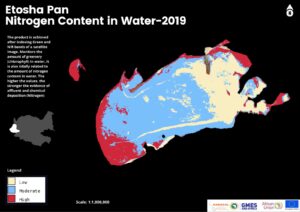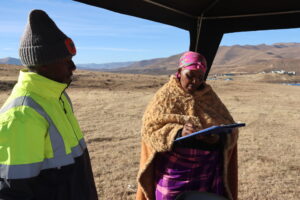About 70% of the country is suffering from abnormally dry or drought conditions, forcing it to start up old gas-fired power plants
By Vipal Monga
The Canadian province of Quebec has big plans of becoming the “battery of the U.S. northeast” by feeding power generated from its dams and other hydro plants to millions of people in Vermont, Massachusetts and New York state. But dry conditions that have affected energy output worldwide are forcing one of the world’s largest hydropower producers to cut exports.
“There wasn’t enough snow or rain in the regions where we needed it,” said Michael Sabia, chief executive of Hydro‑Québec, the provincial utility. “We can’t make it rain, as much as we’d like to.”
Elsewhere, China, India and the U.S. in 2023 all recorded decreases in their hydro production for the same reason, contributing to a record global decline in hydropower generation, according to the International Energy Agency. Many countries resorted to fossil-fuel electricity generation to make up for the hydro shortfall, which drove up carbon-dioxide emissions by 170 megatons in 2023, roughly equal to the annual emissions from 40 million gas-powered cars.

As the climate has become drier in recent years, Canada’s utilities are investing hundreds of billions of dollars to diversify their grids. PHOTO: AARON HEMENS FOR THE WALL STREET JOURNAL
“Drought is a big concern,” said Lei Xie, a researcher with the International Hydropower Association, a London-based nonprofit group. She said it is becoming more difficult for forecasters to model the extremes of climate change, and predict from year to year how much electricity local hydroelectric systems will generate.
Canada bet heavily on hydro as a means of cleaning up its carbon footprint; it is the third-largest hydroelectricity producer in the world. But with the climate becoming markedly drier in recent years, Canada’s utilities are now investing hundreds of billions of dollars to diversify their grids, in some cases leaning on power plants fueled by gas or coal to meet mushrooming demand.
Hydro power from the thousands of rivers and streams that crisscross the country normally provides about 60% of the country’s electricity. The country’s resources are enormous. The water reservoirs in Quebec alone collectively cover more than 4,600 square miles, almost double the area of Delaware.
But drought conditions extending from the west coast to the east are so bad that rivers and lakes in parts of Canada are drying up. Provincial authorities have cut back on exports, and, in some cases, turned to backup generators.
Drying Up
Canada, the world’s third-largest hydro producer, is struggling with a drought covering most of the country.

TorontoNote: Drought as of Feb. 29. Extreme drought includes exceptional drought. Areas without drought designations are either not experiencing drought or were not analyzed.Sources: Agriculture and Agri-Food Canada (drought); Natural Resources Canada (hydro power stations)Emma Brown/THE WALL STREET JOURNAL
Étienne Boucher, a professor at the University of Quebec in Montreal, said water flows into Quebec’s reservoirs fell far below the mean levels observed between 1980 and 2000.
While one bad year shouldn’t cause too much worry, the north often has periods of persistent drought, and climate change could make those dry periods much worse, threatening the sustainability of Quebec’s hydro supply, said Boucher.
“There’s still a lot of uncertainty when predicting water flows in the north,” he said. “The past is becoming less of a good analogue for what is going to occur in the future.”
The impact threatens to undermine Canada’s reputation as a stable provider of clean and sustainable energy and risks derailing the country’s efforts to cut greenhouse-gas emissions.
“Canada has historically been seen as a hydroelectricity superpower, but this narrative has shifted,” said John Pomeroy, a director at the University of Saskatchewan’s Centre for Hydrology, which studies water flows and climate change. “In parts of the country, conditions are truly disastrous.”
The province of British Columbia, Canada’s second-largest hydro producer, has been in a drought since the middle of 2022. Water levels in the giant reserves in the northern and southeastern regions of British Columbia have fallen because there has been less snow in the winter and less rain in the spring, forcing the province to conserve water, said a spokesman for BC Hydro, the provincial utility.


In the 142-mile long Arrow Lakes Reservoir, which is part of the Columbia River system that provides almost half of the province’s power, waters this past summer receded to reveal old building foundations and the rusted husks of tractors that were drowned when the area was flooded in 1961, said Victoria Youmans, a resident of the village of Nakusp, which sits on the eastern shore of the lake.
With water levels so low, BC Hydro had to import almost one-fifth of the power residents and businesses used in 2023 from the neighboring province of Alberta and U.S. states from across the border, much of it produced by fossil fuels.
It has been a persistent problem. Despite having a quarter of all of Canada’s fresh flowing water within its territory, the province has had to import power for seven out of the last 15 years, according to David Hughes, the founder of Global Sustainability Research, a consulting company.
Although some of the most severe global effects are tied to the short-term effects of El Niño—a climate pattern that often ushers in periods of intense drought—parts of Canada, especially in the north, have been struggling with an extended, multiyear decline in the critical water sources such as mountain snowpacks that feed hydro reservoirs.
MORE FROM AFRICA NEWS 24
10 African countries with the highest number of aircraft in 2024

Roughly 70% of Canada was abnormally dry or in moderate to exceptional drought at the end of January, according to the Government of Canada. Dry conditions have strained the biggest hydroelectric utilities in the country in British Columbia, Manitoba and Quebec, provinces where residents and businesses get almost all their power from hydro.
Downstream from British Columbia, the province of Manitoba in the fall fired up a natural-gas power plant it normally only uses during the coldest winter months to make up for a shortfall in hydro production.
Canada’s largest hydro producer, Quebec, has staked much of its economic future on its ability to deliver clean energy to residents and businesses. The province has pitched itself to emissions-conscious battery manufacturers and mining companies as a provider of clean electricity with rates that are among the lowest in North America.
It has also been hoping to export power to power-hungry U.S. states, marketing itself as a virtually unparalleled provider of abundant and reliable renewable power. The province has signed long-term contracts with Massachusetts and New York state to provide roughly 20 terawatt hours of power to the states, enough to provide electricity to 1.6 million homes for a year.
The province also makes money by selling extra energy on short-term spot markets, but a lack of snow and rainfall in the northern reaches of the province lowered water levels in Quebec’s massive reservoirs, which forced the province to cut the amount it sold on those markets, costing it roughly $400 million in lost revenues from those sales last year, an 18% decrease from 2022.

Sabia, the Hydro-Québec CEO, said that dry conditions in the province aren’t yet at crisis levels, but he also noted that its existing hydro capacity, already among the highest in the world, isn’t enough to meet growing demand. To expand the grid and keep a promise to become a net-zero emissions jurisdiction by 2050, the province has said it would invest more than $80 billion over the next decade to boost capacity across a range of sustainable power sources and install wind turbines, solar farms, upgrade existing hydro dams and build new ones.
“It’s a lot of money,” said Douglas Offerman, an analyst with Fitch Ratings. Lower exports combined with pressure to tap new power sources is threatening to stretch government balance sheets already pressured by an aging population and the need to upgrade social services and urban infrastructure.
“They’re adding a big-ticket item to an already long list of priorities,” Offerman said.

First published by: The Wall Street Journal












